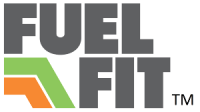If you do a search on Google on the definition of “Clean-Eating”, you are likely to get a whole ton of different answers. So seriously, what does “clean-eating” really mean?
In the broad sense, clean-eating basically means eating mainly whole, real foods. Think lots of veggies, fruits, whole-grains, animal and plant-based protein, nuts, seeds, and oils. That also translates to eating foods that are as close to nature as possible, i.e. minimally processed.
Don’t misunderstand the phrase “clean-eating”as implying that if you are not “clean-eating”, you must be eating horribly and subject yourself to “nutrition doomsday”. That is far from the truth. You need to see that foods don’t exist in a black & white world. They exist in a continuum of “best-for-you” to “not-so-good-for-you”. For example, let’s take an apple. The continuum would probably look like this

The whole idea of clean-eating is really to set you up to consider this question: “Where does my food come from?” When you have this question in your head, you’ll adopt the habit of reading labels, checking sources, learning about and understanding the food you are eating.
And why is this important? Because unless you live on a farm (an organic one to boot), there’s no running away from processed and packaged foods. In fact, processing often improves the safety of our food supply and increases the bioavailability of some nutrients and antioxidants. For example, flash-frozen vegetables (frozen immediately after harvest) are nutrient-packed and may sometimes be even more nutritious than the fresh ones! It also provides us with the convenience and ability to quickly and easily whip up all of those delicious-looking recipes seen on Facebook or Instagram.
4 tips for clean-eating
Plenty of fruits and vegetables
If you have plenty of fruits and vegetables in your meal, it’s hard to go wrong. Unless you are eating fruit cocktail from the can full of syrup. Aim for a colourful plate! Just look at the one below prepared by one of our Fuelfit Nutrition Pro Coach Participant, Michelle.

Michelle – Vegetables Habit Example
Eat food, not claims
Brands spend alot of money to put healthy claims on their packaging. Don’t get fooled by them! By the way, the Health Promotion Board “Healthier Choice” can also be misleading. Why? Because the “healthier choice” is healthier than other similar products and not all foods, i.e. a bag of potato chips can actually have a “healthier choice” logo by just simply having less salt than other potato chips but is that bag of potato chips healthier than a potato? Of course not.
Think “transparent”, rather than “clean”
You know something great about a chocolate bar? It’s HONEST! It doesn’t try to pretend it’s not a chocolate bar. Compare this to the “energy bars” in the market, most of them are just chocolate bars or candy bars pretending to be something else. Quoting a close friend of ours, Bert – “I hate those Froyos! They are just pretending to be healthy but they are not!”
Yep, if you want to have a chocolate bar, or an ice cream, just have the real thing. And enjoy it to the fullest.
Allow and embrace indulgence
Use the 80-20 rule: allow yourself flexibility to indulge sometimes. Indulging is a part of healthy lifestyle while obsessing about ingredients, checking food labels constantly and getting paranoid all the time is not. Just aim to stay in the “clean-eating question” 80% of the time. Because really, what is life without a good ‘o piece of prata, a bowl of Laksa or a pack of french fries once in awhile?
Enjoyed this article? Click above to get the free download of 5 simple healthy recipes for people who can’t really cook (just like me!)
